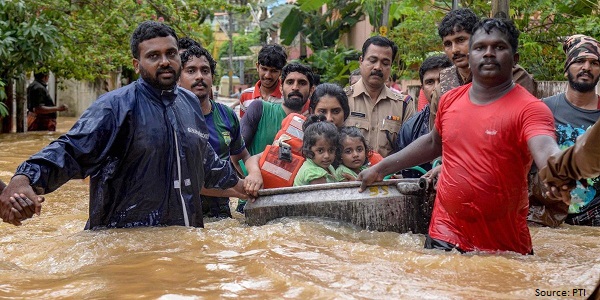
The Tough Spatial Planning Decisions to Take
21 December 2018
This blog is part of a series on policy decisions, the causes and consquences of the Kerala floods. The first blog can be found here.
In my previous blog, I had listed out the modalities by which the spatial planning process could be split, so as to distribute the responsibilities to the state and to the local governments. While the state is best positioned to undertake the perspective plan and the regional plans that covers urban and rural areas, each city town and Panchayat will have to prepare its detailed master plan. Following the preparation of these master plans, each local government will then have to prepare its CDP, the City Development Plan, which in turn will comprise implementable projects. Then, to ensure that this does not remain on paper, the projects listed in the CDP will have to be funded, by the LG budgets allocating funds for these.
Yet, is this enough for the extraordinary and grim reality that may strike us in future, due to climate change? Won’t these processes still result in haphazard development, with each local government being blissfully unaware of what is happening in the next local government, and the state unable to rein in local decisions to the extent required for the common good?
The future is not going to be easy for any state to tackle. There are several Hobson’s choices before the state, when planning for a safe and climate resilient Kerala. Besides, as I said earlier, Kerala’s approach is only a case study; each state in India is faced with making these choices in their own climatic and environmental contexts.
Let us get back to Kerala, though.
Land is at a premium in Kerala like in very few states. Caught as it is between the environmentally sensitive coast and the Western Ghats, there is very little by way of available land for future expansion. Take further into account the fact that the natural topography of the land has resulted in wetlands that are fit for nothing other than paddy cultivation, the area available for habitation expansion narrows down further. The traditional Malayali abhors high rises; never is she happier than to live in their sprawling village homes in the midst of plantations of coconut and banana. But the days when every Malayali could afford not only to dream of bucolic rural living, but actually go out and live that dream, are long gone. The compromise is an uneasy one; turn a corner in a sylvan village in Kerala and one may come across a row of flats. Urban housing in completely rural settings. This low density sprawl is the uneasy compromise that most Malayalis have reconciled themselves to; if not a coconut tree in my backyard, why not some fronds in my apartment verandah? However, the recent floods have shown that such sprawls also put a high pressure on the environment; roads that cater to these dispersed apartment blocks and housing areas cut into hillsides and destroy the environment. There is thus a strong case for Kerala to go in for more densification in its urban areas so as to prevent the medium rise sprawl spreading out into precious and environmentally sensitive rural, coastal and hill areas. Densification is an euphemism for high rise structures. Kerala will have to make the choice to enable more high rise islands of urbanisation to be developed so as to reduce the pressure on rural land. This will be a political anathema to most people and will go against traditional beliefs and practices on lifestyles. But is there a choice?
A similar choice has to be made with respect to transport as well. Anyone who travels on National Highway 47, which serves Central and South Kerala would realise that Kerala is now one gigantic traffic jam. When the floods hit the state, the road was breached between Palakkad and Trissur due to landslides. This section of road is a bottleneck as road widening has to be done after denotifying forest areas. A similar bottleneck exists between Alappuzha, Kollam and Thiruvananthapuram, where the process of land acquisition for widening the road to four lanes has been proceeding slowly and painfully. The local people do not give up their land so easily.
At the same time, the Kochi Metro has been a success of sorts; it follows more or less the path of the National Highway, from the northern to the southern reaches of the city. It begs the thought as to whether the Metro may not be extended along the spine of Kerala; it may be a cheaper and more environmentally friendly approach than widening highways, which has proven to be a bugbear in Kerala.
The third example is that of solid waste management. This issue has become a contentious one between local governments, because nobody wants to have a landfill in their locality. City municipalities have been blocked by peri-urban Panchayats from dumping their garbage in the latter’s environs. Political parties have justifiably crossed swords on this issue; which has not led to the finding of solutions but a gridlock. Even though solid waste management is a local government responsibility, the situation at present begs for the intervention of the state; as it is the state alone that may be able to find a solution to the problem of landfills. It will be the burden of the state to find place for a few landfills that cater to the requirements of all local governments in Kerala, even as the latter initiate and implement strict standards on segregation and recycling.
There will be many more such choices to be made, with respect to equal access to services, ensuring social justice and such like. But given the potential threat to Kerala from climate change, wicked problems cannot be allowed to fester. The floods have been a wakeup call. The people of the state cannot afford to go back to sleep.





